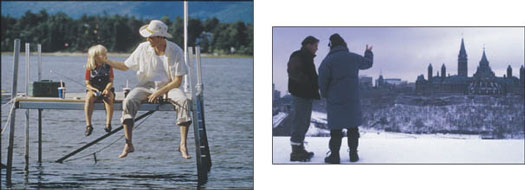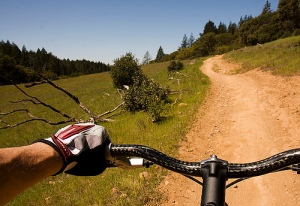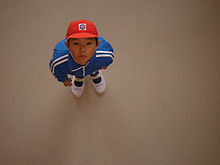establishing shot: usually the first of a new scene, designed to show the audience where the action is taking place. Usually a 'very wide shot' or 'extremely wide shot'. 
master shot:A single shot, usually a wide shot, that incorporates the whole scene from beginning to end. Typically a master shot will be filmed first, and then all the close-ups and other shots afterwards. (covers the entire action of a scene.)
- close up: A photograph, movie, or video taken at close range and showing the subject on a large scale - a close-up of her face(emotions)/they see themselves in close-up/a close-up view
- mid-shot: shows some part of the subject in more detail, whilst still showing enough for the audience to feel as if they were looking at the whole subject.

- long shot: This allows the audience to see the character from head to toe. It shows the relationship between the character and the environment they are in.

- two-shot: This shot has two characters in it. It shows the relationship between the two and the action that they are in involved in. Usually used in chat shows.
-
point of view shot: This shot is used in reference to a close up. It engages the audience and shows them what the characters motives are.
over the shoulder shot: is a shot of someone or something taken from the perspective or camera angle from the shoulder of another person. The back of the shoulder and head of this person is used to frame the image of whatever (or whomever) the camera is pointing toward. This type of shot is very common when two characters are having a discussion and will usually follow an establishing shot which helps the audience place the characters in their setting. It is an example of a camera angle.
- ANGLES
high angle: When the audience views the subject from above, looking down. Often used to create a sense of scale – the position suggests subjects look small/vulnerable.
low angle: The opposite of a high angle shot, we look up at a certain subject creating a feeling the importance or foreboding.
canted angle: A camera angle which is deliberately slanted to one side, sometimes used for dramatic effect to help portray unease, disorientation, frantic or desperate action.
-
MOVEMENT
pan: this is where the camera is mounted on a tripod and moves from left to right. Used with a point of view shot, it can be used to show a character searching a room.
-
tilt: this is the movement of the camera either up or down on an axis. An upward tilt usually conveys power or status; and mixed with a point of view shot can show how a character perceives another character in terms of authority.
track/dolly: is a segment in which the camera is mounted on a camera dolly, a wheeled platform thatis pushed on rails while the picture is being taken.
crane: this is where the action is filmed in a vertical direction; the camera attached to a crane. this can often add depth to a scene; as well as getting multiple characters in shot. -
zoom: this shots creates the movement of going in towards the character and moving out from the character. It can stimulate a tracking shot. The opposite of zoom is reverse zoom.





No comments:
Post a Comment